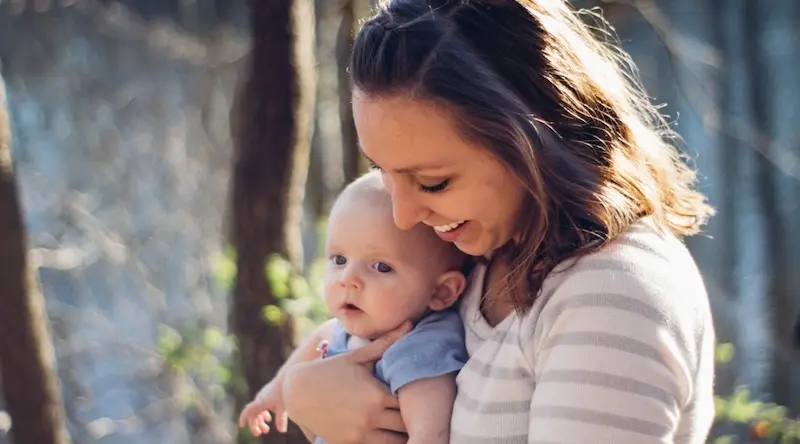settings
children
With Famly since
Parent* partnerships play a key part in any effective early years provision. When practitioners work well together with their families, they’re doing a better job of supporting the children’s care, learning, and development. Amongst other things, creating strong parent partnerships:
- Help children settle well into your setting.
- Enable you to support parents who would like help with their child’s home learning.
- Allow you to gather feedback to support a cycle of self-improvement.
When we think about parent partnerships, it’s important to keep in mind this healthy reminder from the 2000 Foundation Stage Guidance:
“Parents are children’s first and most enduring educators.”
As practitioners, it is tempting to believe that we are the ones who make all the difference – that we do most of the work in terms of learning and development. In reality, though, children spend far more time at home than they do in our settings. It is crucial that we offer our support, to help make all their experiences as beneficial as possible.
*In this article ‘parent’ describes any adult who cares for the child. This includes foster/adoptive parents, other family members, carers, and so on.
Getting to know each other
The first step in working well with parents and carers is getting to know each other as well as possible.
Home visits can play a crucial role at the start of the relationship. When you see the child and family in their home, this gives you an insight into their lives. It also allows you to share information about your provision, and parents may feel more able to ask questions or raise concerns when they are in their own environment.
Take along some photos of your setting, and some toys for the child to play with while you talk to the parents – this will help the child to have a sense of familiarity when they start in your provision. You can also assist the parents in completing any registration paperwork if they would like.

A two-way dialogue
Maintain and build on these early bonds you create by ensuring that there are lots of opportunities for two-way communication and dialogue.
From newsletters to parent consultations, from coffee mornings to stay and play sessions – you cannot think of these as a time-drain. They’re a vital contribution to a growing sense of partnership. Look for ways to involve all members of the family in your communication – in particular, look for ways to engage dads as well as mums, and grandparents too.
The transition into the setting
Working on your parent partnerships is particularly important when the child first starts at your setting. Both children and carers may be nervous about transition – for many, this is the first time they have been apart for any significant amount of time.
At our setting, we encourage parents to stay and play for as long as they want to – we understand that it is not just the child who may find the transition difficult. In some settings, the size or layout of the provision may make this difficult to do. In these instances, think about ways you can communicate how well the child is settling in to parents, particularly if they are anxious. You might use text messages or information sent via a digital learning journey.

Rethink your morning routine
When you take a step back and really consider your morning routine, is it as welcoming and inclusive as it could be for all your families? Make sure that communications are sent out in all the languages used by your community, and that welcome posters include everyone. Look at your setting through the eyes of someone seeing it for the first time – does it feel warm and welcoming? It is easy to process all the key information, or is there too much going on at once?
To promote and support parent partnerships, it can work well to give your parents some key tasks to do with their children when they drop them off at the setting. For instance, in our setting part of the morning routine is for parents to help the child put items in the show and tell box, choose a new picture book together, and support the children in finding their name in the box and adding it to the ‘milk’ or ‘water’ board for snack time.
Genuine partnerships
It can be surprisingly hard to develop parent partnerships in which all members feel equally valued and have equal input. If we are honest with ourselves, the flow of information and instructions does often tend to flow in one direction, right?
A good example of this might be in your monthly newsletter which can so easily turn into a series of requests – label clothes, pick up children promptly, pay bills on time – you know the drill. Make sure that you always find space in your communications to be supportive, rather than simply nagging.
To develop real and lasting partnerships, it is important that you are not doing things ‘to’ your families, but working with and alongside them. When you offer support, just remember that there is a fine line between helping parents and patronising them.

Gathering feedback from questionnaires
To ensure the flow of information goes from parents to practitioners and back again, it works really well to use regular feedback questionnaires. In this way, parents can give input about anything that might need changing at your setting, and you send out the clear message loud to parents that you want to hear from them. You might also use a ‘suggestions’ box for parents to offer their ideas.
The long-lasting effects of strong parent partnerships
Creating parent partnerships is a long-term project, but it can really pay dividends, even when a child has long since left your setting.
The wooded area where we hold our weekly forest club is on a piece of land owned by one of our ex-parents, and I still work as a volunteer on our preschool management committee, even though both my children are now at secondary school. Invite, include and involve your parents, and you may end up with much more than you had bargained for!
Sue Cowley is an author, teacher and trainer who has helped to run her local preschool for the last ten years. Her latest book is The Ultimate Guide to Differentiation.
The big ideas
Get a personal demo now
Get a guided 1-on-1 tour of the whole platform. See what features are the best fit for you, and ask us as many questions as you like.
Book free demo










